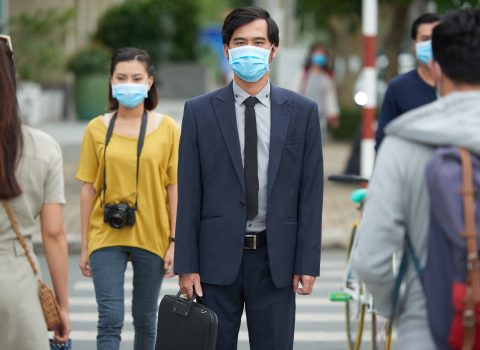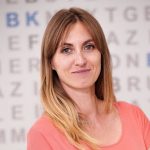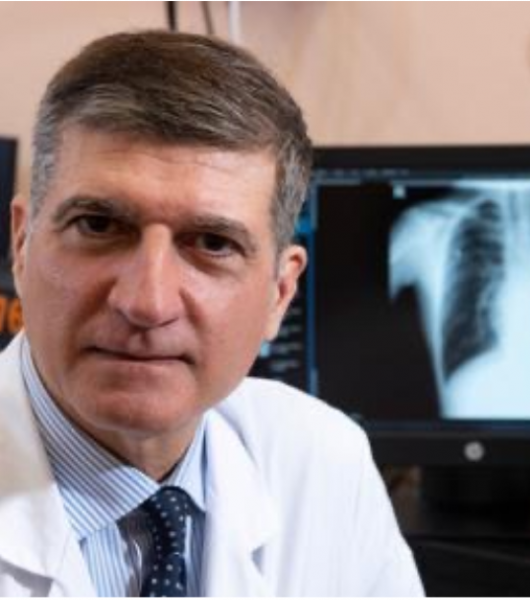
What do we know and what not about Covid-19?
A final master class to take stock of the medical and scientific acquisitions currently available on SARS-CoV2
Si è concluso con una master class degna di nota il ciclo di lezioni dedicato al Covid-19, organizzato dall’Ordine dei Medici di Trento e FBK per la Salute, per offrire strumenti di conoscenza sulla pandemia ai professionisti sanitari del Trentino.
The cycle of lessons dedicated to COVID-19, organized by the Trento Medical Association and FBK for Health, ended with a master class worthy of note, to offer knowledge tools on the pandemic to health professionals in Trentino.
The protagonist was Sergio Alfonso Harari, a doctor who since January 2020 has taken over the direction of the Pneumology Unit, Pulmonary Hemodynamics Service and Respiratory Pathophysiology and Respiratory Semi-intensive Therapy Unit of the San Giuseppe Hospital in Milan and who therefore found himself fighting in the forefront during the peak months of the SARS-Cov2 epidemic. He and his colleagues have changed since then: they are no longer the same doctors who, at the end of February, wore heavy protective suits and took up service in the lung unit reconverted in Covid19-department, in the most flagellated region of Italy. Among them, not only pulmonologists but also other specialists and nurses who, in an emergency, rolled up their sleeves and necessarily expanded their skills, learned new treatment routines and made themselves available to fight the unknown virus.
They lost one third of the hospitalized patients in a matter of weeks and this has inevitably weighed on their professional history but also, and not least, on their emotional and personal one.
But how do you cure an unknown pathology, which shares some symptoms with a banal seasonal flu but which turns out, especially in some subjects, to be much more subtle and lethal?
Initially, the patients were treated with antiretrovirals such as ritonavir, which however were not particularly effective, and with hydroxychloroquine – the drug so highly praised by the overseas tycoon – that was quickly discarded because the side effects produced were greater than the benefits brought.
The most consistent results were instead achieved with cortisone, steroidal and heparin drugs, administered to combat the now known cytochemical storm, characterized by the production, by cells of the immune system, of inflammatory substances (cytokines) with devastating effects on lungs and other organs. The immunosuppressant drug Tocilizumab has also been used, usually used in patients with rheumatoid arthritis, which however – explains Harari – is effective only if administered before the patient reaches the most critical phase of intubation.
Now that we are out of the peak phase and the intensive care has finally emptied, it is time to define a treatment protocol but, Harari points out, besides there is still no antidote to Covid-19, there is not even a scientific therapy approved and consolidated, due both to the extreme behavioral changeability of the virus in question, and to the fact that many obscure points still remain on this pandemic, which at times recalls those of past centuries. For example, it is not clear why the virus is lethal in some patients while others are completely asymptomatic. The age of the infected was also fluctuating: although most of them, and unfortunately also the deceased, were of senile age, 20% of those hospitalized in San Giuseppe were under 50 years of age. Cigarette smoking and high blood pressure – typical of both elderly and overweight subjects – were highlighted as risk factors, as well as comorbidity (i.e. the presence of other pathologies) but it is still difficult to define an exhaustive picture.
In addition, compared to past months, the new SARS-Cov2 infected patients have fewer interstitial pneumonia, the causes of which remain to be examined.
Even the different spread by geographical areas remains a gray area: the virus, in fact, has developed more in the regions of Northern Italy (Lombardy and the Po Valley in the lead) but also differently in some European states (Italy, Spain, France) rather than in others (Germany), according to the data available so far. Air pollution has been regarded as one of the potential causes of greater virulence, but there are still no scientific endorsements in this regard.
In short, there are still many obscure points, which it will be possible to clarify probably after some time but also by studying the epidemics that previously afflicted the populations on a large scale, such as that of plague of the seventeenth century or of Spanish flu of the early ‘900, although even on these the scholars have not yet managed to understand everything.
What is certain is that it will be crucial to identify, stem and suffocate any new SARS-Cov2 outbreaks immediately, thanks also to the precious help of general practitioners, who will have to act as “territorial watchmen” for patients being treated at their clinics. In the emergency of the past few months, the need to keep some infected at home in order not to overload the already suffering hospital facilities has proved to be a necessary and contingent but risky strategy: one of the things we have learned about SARS-Cov2, in fact, is precisely the importance of providing immediate and timely treatment to the infected, to avoid the onset of complications that can cause serious problems in the course of the disease.

